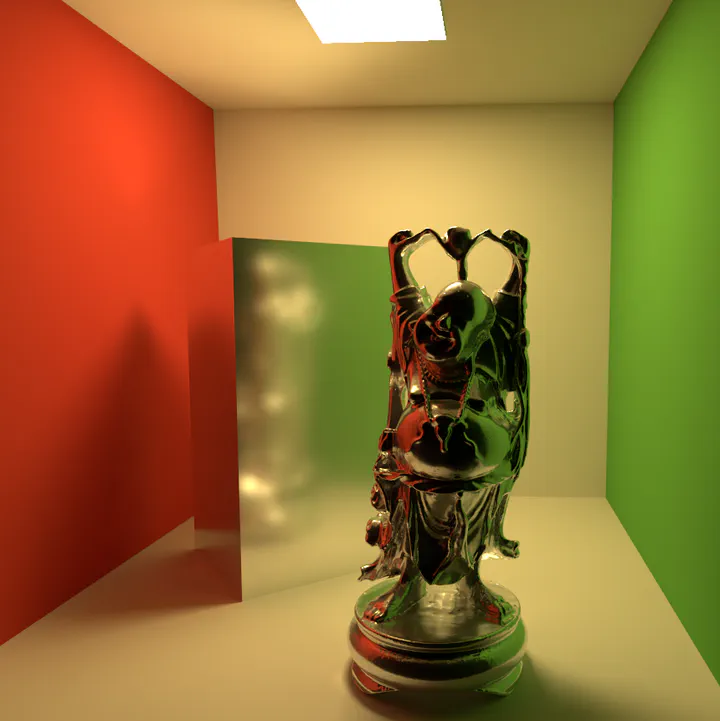Virtual Blue Noise Lighting

Abstract
We introduce virtual blue noise lighting, a rendering pipeline for estimating indirect illumination with a blue noise distribution of virtual lights. Our pipeline is designed for virtual lights with non-uniform emission profiles that are more expensive to store, but required for properly and efficiently handling specular transport.
Unlike the typical virtual light placement approaches that traverse light paths from the original light sources, we generate them starting from the camera. This avoids two important problems:wasted memory and computation with fully-occluded virtual lights, and excessive virtual light density around high-probability light paths. In addition, we introduce a parallel and adaptive sample elimination strategy to achieve a blue noise distribution of virtual lights with varying density. This addresses the third problem of virtual light placement by ensuring that they are not placed too close to each other, providing better coverage of the (indirectly) visible surfaces and further improving the quality of the final lighting estimation.
Unlike the typical virtual light placement approaches that traverse light paths from the original light sources, we generate them starting from the camera. This avoids two important problems:wasted memory and computation with fully-occluded virtual lights, and excessive virtual light density around high-probability light paths. In addition, we introduce a parallel and adaptive sample elimination strategy to achieve a blue noise distribution of virtual lights with varying density. This addresses the third problem of virtual light placement by ensuring that they are not placed too close to each other, providing better coverage of the (indirectly) visible surfaces and further improving the quality of the final lighting estimation.
Type
Publication
ACM Comput. Graph. Interact. Tech.(HPG 2022)
Authors
Tianyu Li
Authors
Daqi Lin
Authors
Cem Yuksel